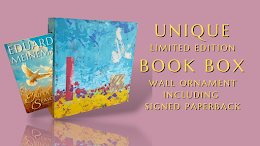 |
| Buy this item: Clamorous Coral |
Anyone who
likes snorkeling or scuba diving, like I do, knows how coral reefs can look
like. Marine aquarists may experience the fabulous coralline colors in their
home aquarium as well.
Coral reefs
provide shelter to thousands of living creatures. The rock itself is mostly
covered with a layer of algae, known as coralline algae. Eventually this
becomes a beautiful, red crusted layer highly appreciated by hobbyists. In the
marine aquarium it proves the water has ‘aged’, in other words your aquarium is
ready for live stock. The crust layers grow upon anything, including pumps, windows
etc. This can be annoying to an aquarist as removing the algae can be problematic
and may require a daily routine.
Diving
above the reefs, the current sways you back and forth. These waves provide the
necessary movements for the corals as they are constantly providing new food
supplies. The coral polyps, known to most people as the ‘little hands’, will grab
the food out of the water. Of course divers usually go down under to enjoy
corals and fish. I think the scenery of coral rock itself. The construction and
the colors are creating a natural image which is worth to have a closer look.
It inspired me over and over again.
The
painting above is a triptych. Three panels of 60x60cm each (total length
180cm). It has the deep, crimson red and violet coloration which is also seen
on coral rock. The water currents, bouncing in between the rocks, provided me
the title. ‘Clamorous’ as in tumultuous,
or disordered. The chaos of nature. I love it!


